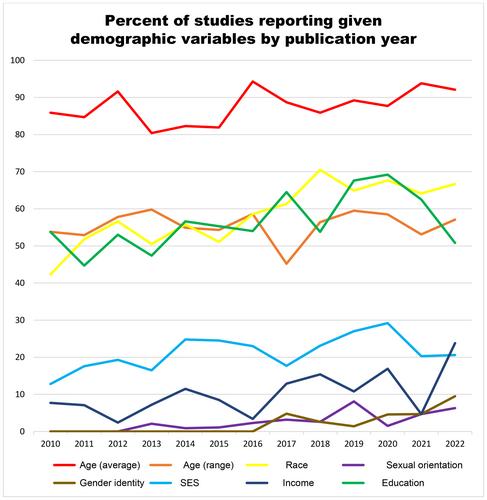Increasing diversity has become a priority for all fields working with human subjects due to historic exclusions and misrepresentations of participants with minoritized identities. To create a more representative and generalizable science of alcohol use, the Research Society on Alcohol (RSA) and its official journal, Alcohol: Clinical and Experimental Research (ACER), have increasingly incorporated diversity and inclusion into their posted values and programming.
We analyzed the content of articles published in ACER from 2010 through 2022 (6 years before and after the formation of RSA's Diversity Committee) to assess the reporting of participants' demographic information and whether there has been increased inclusion of diverse samples in alcohol research over time. Our team screened 3292 abstracts for data extraction; studies were included if they were primary analyses of data collected from human subjects (n = 1043).
Reporting of all demographic variables increased over time, with significant increases in reporting for race/ethnicity, sexual orientation, gender identity, socioeconomic status (SES), income, and educational attainment. Demographic variables were also increasingly used in analyses. However, representation of research outside the United States diminished significantly over time.
We provide recommended journal article reporting standards for ACER to continue the positive progress in reporting demographics in alcohol research and facilitate meta-analyses examining demographic modulation and the impact of social determinants of health.


